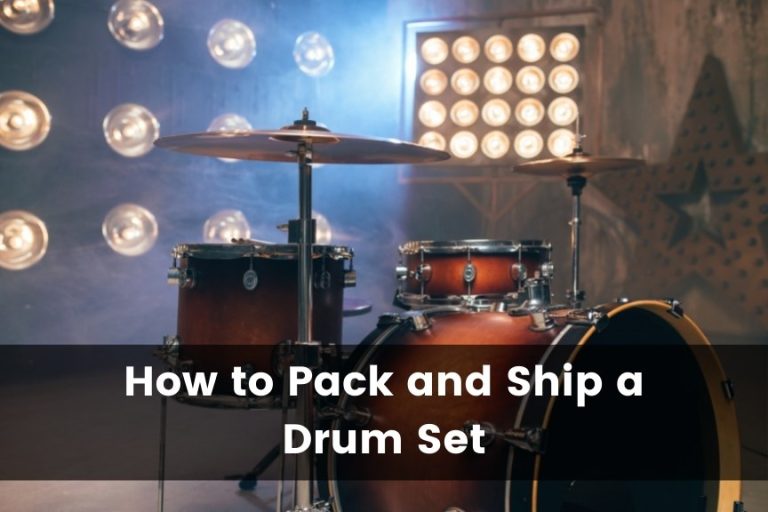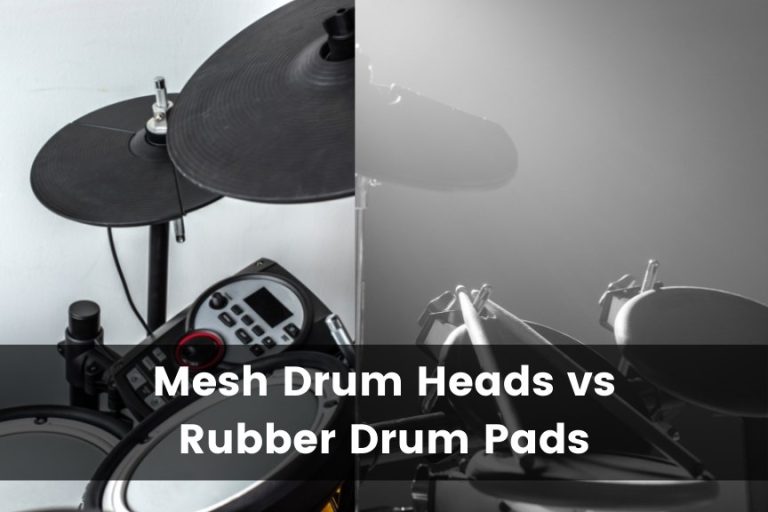What Are Toms? The Ultimate Guide to Tom-Tom Drums
The drumkit is one of the most important musical instruments in the history of popular music. It’s often the driving force behind a band or an individual song. Working with a drum kit gives you much more flexibility than other musical instruments because you can create many different sounds—but you have to know how to get them.
When most people think of their iconic drum sound, the first thing that comes to mind is their snare drum. However, your tom-tom drums can be just as important when it comes to optimizing your drum sound for any particular song or style of music.
Tom-toms produce various sound effects based on tuning, depth, and diameter. The cylindrical drum’s primary function is to provide a rhythmic foundation for other drums in the kit to play over. They’re known for their warm and deep sounds, which musicians use in a wide range of genres.
For decades, drummers have searched for the perfect drum kit—from steel to wood, round and square heads, chrome, and brass. Through it all, toms have stayed a true and steady staple in percussion since the early 1900s. But what are tom drums exactly? Let’s break it down.
What Are Toms?
Drum sets have been around for hundreds of years. The first drum was created in the 6th century in China and has come a long way since then. The instrument has evolved from simple wooden drums to advanced and complex components that one person or an entire orchestra can play.
Tom-tom drums can be confusing and overwhelming if you try to figure out how they work. But once you do, you’re opening yourself up to a world of rhythm. So, What are toms? They are the low, steady beat that helps to establish a musical rhythm and keep everything on track.
Toms are a critical feature of the standard five-piece drum kit. A tom-tom is a drum with a single head and no snares. Typically played in ensembles with other percussion instruments, toms are usually made of wood, though it is possible to find them made from metal, acrylic, or even plastic.
Ultimately, the tom drum is a percussion instrument used in many different styles of music. It’s a drum that, like the snare drum, is hit with a stick or mallets—but unlike the snare, the toms are tuned lower and have more resonance.
How Toms Are Made
Manufacturing a tom-tom drum is simple but requires coordination and attention to detail. The resonant frequency of the drum, combined with the shell, and vibrations of the drumhead, generates a unique sound. The tom drum is made up of three components to achieve its distinctive sound. Let us examine each component further.
Drum Shell
The drum shell is the tom’s body and is often natural wood. It contains a resonant head that vibrates to create sound when you hit it with a drumstick. Drum shells are made of various wood types and depths, making for a unique sound.
A few common kinds of wood to create some of the best-sounding shells are:
- Maple
- Birch
- Cherry
- Oak
- Walnut.
First, the raw material is cut and glued together to make a cylinder. The cylinder is then heated to wrap around a mold. The mold is placed into an oven, pressed, and heated until it becomes malleable. This process allows the cylinder to stretch to form the shape of the drum shell.
Once fully assembled, the maker adds a special coating to add durability and enhance the sound quality. It is coating the tom with a lacquer that protects it as they’re being played and shipped to customers. The paint also helps give the toms a unique look.
It’s not uncommon to see acrylic tom shells either. This type of shell will have a higher pitch and less low-end than wooden ones.
Drum Head
Drum heads are the skins of drums; as you can imagine, they can come in a variety of materials. Early drum makers used animal skin, such as calfskin, but today they are most commonly made of plastic.
Toms drumheads give them their characteristic sound and even affect how the drum itself sounds. The head is stretched across the drum, attached to a ring (called a hoop), and supported by secondary hardware.
It’s important to note that not all head types work well with every type of drum—you’ll need to know what kind of sound you want your tom to have before choosing what type of head to use.
Drumheads are a drummer’s best friend. They protect the drum, and they also affect the sound. While drummers often overlook heads, they are one of the essential parts of getting a unique sound from a tom.
Secondary Hardware
Heads and shells are the building blocks of the tom-tom drum. However, secondary hardware must combine these two components and keep them structurally sound. Various chrome tension rods and lugs serve this purpose.
The tension rods and lugs are a vital feature of the tom drum. These components enable the fine-tuning of each drum by tightening or loosening them. Additionally, a chrome rim attaches the tom’s head to its shell.
While rack toms are attached to the kick drum, floor toms are also usually mounted atop detachable legs, making them easier to move around.
How Many Toms in a Kit
When looking for a new drum kit, it’s easy to get overwhelmed by all the available options. With so many sizes, brands, and features, it’s hard to know what’s best when starting.
There’s much to learn about each drum’s part in the kit. First, let’s review some basic information about a drum kit. A drum kit consists of many different pieces of equipment. The drums provide the foundation for the sound you hear, and then there are cymbals, which help accent those sounds.
Various accessories, such as cowbells and tambourines, help create a full sound. But one of a drum kit’s most important aspects is its tom-tom drums.
While learning to play the drums, one of the first things you’ll know is how to count the number of tom drums in a drum kit. After all, the toms are where you get your rhythm, and each drum has a unique sound.
There is no standard configuration for the drumkit. You can use as many toms, drums, and cymbals as you like. The most common drum kit setup is the five-piece, which entails;
- One floor tom.
- Two rack toms.
However, it’s common for drummers to add extra toms to their kit.
How many toms you need will depend upon the depth of sound you’re trying to create, the genre of music you’re playing, how skilled you are, and what you’re trying to achieve with your sound. Some drummers will have three rack and two-floor toms of different sizes to make more complex and unique sounds.
For the beginner, starting with the standard three-tom setup is recommended. It’s not uncommon to use one rack tom either. As you progress in your drum playing skills, you can add more depth to your sound by increasing the number of toms in your kit.
Different Types of Toms
Tom-toms come in a few different varieties, each of which will create a different sound. If you want a particular sound like a low, booming drum, you will want to ensure that you are getting the correct tom.
Each type has a specific function in a drum kit and will therefore create a different sound. There are four main types of toms:
Rack Toms
The rack tom consists of two tom-tom drums mounted on the kick drum via a stand (or rack). Each tom is fine-tuned slightly differently from one another to achieve a more significant variation of sound.
Rack toms are used the same way floor toms but produce a different sound because of how much smaller they are. They provide an excellent full sound at a lower dynamic level than the snare drum but higher than the floor tom while adding extra definition to rhythmic patterns.
Rack toms enhance a drummer’s sound by playing fills and adding variation.
Floor Tom
The floor tom is the largest tom-tom drum and sits on the ground to the drummer’s right. Musicians use this tom to make it stand out in a drum kit by giving depth to the music and can characterize a song by its presence or absence.
It’s the most resonant pitched drum in a drum kit and typically sits at waist level. Since the floor tom is big and relatively easy to move around, it’s also often used as a more active element in percussion arrangements.
Floor toms are excellent for providing solid percussive support for playing rhythm guitar, for singing along with, or for setting up a beat that’s easy for other musicians to find their place.
Roto Toms
Roto Toms are a less common drum in a drum kit. Their unique design separates them from other toms in the market.
This type of tom doesn’t have a drum shell and comprises a single head in an aluminum frame. To tune the roto, you have to rotate it, making this drum have a definite pitch compared to regular toms. Therefore, they are used to expand upon the range of a standard kit.
Rototom drums allow you to play rhythms that aren’t possible on a standard drum kit, but they also make some drumming techniques more difficult.
Concert Toms
Drummers frequently use concert toms in orchestras, symphonies, bands, and other musical groups. They offer more melodic tones than standard toms and are used in the classical scene to help produce music that has a variety of sounds and techniques.
They are single-headed tom drums, meaning they only have a top head and no bottom head. Due to their extra deep shells, this shape gives them a more significant punch than regular toms.
There are many different types of tom drums, but the most critical factor in determining the sound you will create is the size of the drum and material.
The Depth and Diameter of Toms
Toms are the backbone of most percussion setups, with their smooth, rounded sound and a wide variety of tones. The different depths and diameters of the drums achieve distinctive sounds and tones.
A significant difference that affects sound is pitch—the higher pitch of a drum will result from a smaller shell with a smaller diameter (less depth). This shape will bring forth a quick response from the tom itself. A lower pitch will result from a deeper shell with a wider diameter.
While there are no rules determining what tom size you should have on your kit, it’s important to remember that different depths and diameters of a toms shell will create different sounds. Ultimately the size of tom you should get will need to be based on the genre or sound you’re trying to achieve.
Here is a list of some standard diameter sizes for rack toms:
- 8″
- 10″
- 12″
- 14″.
Floor toms are generally larger in diameter than rack toms:
- 14″
- 16″
- 18″.
You will typically find the depths of toms in the ranges of:
- 8″
- 10″
- 13″
- 16″.
The trade-off is that deeper drums with a larger diameter will increase the volume of your sound and are generally more robust, especially when playing fast passages.
If you want something bright and crisp, look for a shallower drum with a small diameter. These tend to be more responsive to lighter touches, faster strokes, and rolls—which can be very useful in many situations!
How Toms Are Used
Toms are the most basic of all drum sets. They’re the ones on which you’ll learn the most fundamental drum techniques, so it’s important to know what they are and how to play them.
Learning to play the tom-tom drums can be a great way to get started with percussion. This type of drum is a little more forgiving than others because there are fewer notes and rhythms to play, making it easier for beginners. Tom-toms are also pretty versatile for their size, and you can use them in big, full-bodied tunes and more lighthearted, jazzy pieces.
There are several ways to play toms, but they all use the same basic motions. First, you strike the head of the drum, which creates a sound wave that travels through the shell and into the drumhead. The head then amplifies this sound wave and produces an audible pitch according to the size and material of the drum.
The tom-tom drums are one of the most important aspects of a drum kit because they provide the base of your rhythm and give you a solid foundation to build upon when playing.
They are used in a drum kit to achieve three different but related effects:
Toms Create Tempo
Tempo is one of the most important yet difficult to understand aspects of drumming. It’s commonly associated with every genre, from Jazz and Blues to Rock, Country, and Metal.
Tempo is known as the speed at which you play your instrument. It can be described by beats per minute or by other terms like fast, slow, or moderate.
The drummer sets the tempo of a song. If you want to achieve a great-sounding beat with tom-toms, it’s important not to think about it too much. The goal is to form a steady rhythm that feels natural while maintaining a sense of evenness throughout the entire beat.
The main idea behind achieving great sounding tempo with toms is being aware of these two things:
- Your stick height.
- The distance between the toms.
To assist you in achieving tempo with your toms, it’s a great idea to use a metronome. This tool is a timing device that you can set to how fast you would like to play relating to beats per second. If you want to utilize a metronome to take your skills to the next level, try the Ueteto Mechanical Metronome (available on Amazon.com).
Toms Provide a Distinct Sound
Musicians use the tom to help distinguish between different rhythms in play. A drummer may use one tom to mark out a simple 4/4 rhythm while they play more complex rhythms on other drums. This balance enables greater freedom of movement and helps delineate between beats, so they are heard clearly without crossing over and obscuring each other.
Toms provide helpful body and variety to the overall sound of a drum kit with their resonant tone that is distinct from the bass and snare drum.
Toms Are Great for Drum Fills
Drum fills are a type of drum beat used in many genres of music. They are beats that the drummer plays to fill the space between other parts of the song and to enhance the feel of a song. You may play drum fills on any drum, but musicians most commonly play fills utilizing toms.
Musicians usually play a drum fill in the middle of a song or near the end to give the music some drive. But they may also use it as an attention-grabber at the beginning, making the drums the center stage of the song.
Drummers also use tom-toms in songs with large amounts of percussion and orchestras. In both cases, they are usually only one instrument among many, rather than making up the core percussion line of an ensemble.
Summary
Few other percussion instruments are as exciting and versatile as the tom-tom drums. They’re compact, robust, and provide a wide range of tones.
Tom-toms are an exciting drum and a vital part of a kit. Used carefully, they’re great for adding contrasts to sound. They’re not always essential in some genres, but they’re worthwhile additions to any drum kit.
Toms add a unique element to your drum kit and can take your playing to the next level. Whether you’re new to drumming or want to learn more about the ins and outs, this guide will get you up to speed.







